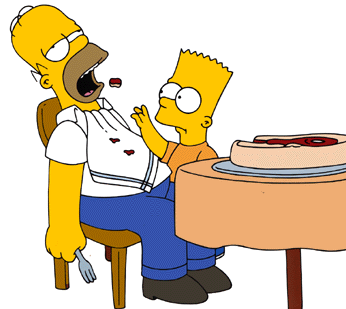May 26th 2013 |
How to cook the perfect steak
There is no greater pleasure for the meat-eater than getting one’s teeth into a fine, well-prepared and well cooked steak.
However, many of us are prepared to settle for a second-rate meal, tossed off on a grill at the local carvery with a handful of mushrooms, exactly six peas, seven chips and a visit to the salad cart.
This will not do, and it is the duty of the gentleman (or, indeed, gentlewoman) to be able to produce the finest steak dinner known to humanity, before guzzling it down with lager and/or your second-cheapest wine in front of Britain’s Got Talent.
As anybody who has followed these gentlemen’s guides long enough know, the secret is not to cut corners. For a start – don’t go to the supermarket for your slab of meat, take yourself to a proper butcher’s shop, where you will get to make your choice without having to prod at it through layers of cellophane.
You’ll be after a prime cut, and as much or as little fat as your taste allows. We’re not bit fans of crisped up-fat, so we ask for it to be trimmed.
The big-name chefs differ over how best to cook your steak, but we know a few things.
– Have your meat at room temperature before you cook. For some reason, your bit of cow doesn’t like to be cold, so wrap in cling film and immerse in warm water for a while
– Season to taste. Some mad people like to cover their juicy, tender steak with hot pepper and murder it entirely to death. These madmen should be dragged out of the kitchen and banned for life. Salt, on the other hand, leaves a fine crispy outer coating which we swear by, as does a bit of crushed garlic. If you’re into a honey glaze or anything of that ilk, we’re not going to stop you. We’re just going to pity you
– Cook. The gentleman chef turns his back on the grill and pan fries his meat. Yes, the grill is healthier as the fat drips away, but so do those flavours and juices that make a steak the joy that it is. A grilled steak is a dry steak and a waste of time. A high heat is good for a thin steak as you can be sure it cooks quickly, evenly and retains those meaty juices. For a thick steak (that’s us), a moderate heat helps it cook all the way through without charring the outside.
– Turn frequently. This keeps the juices in and stops any one side cooking too much.
– Serve. Oh. You want other stuff with the steak? Why didn’t you say? Slap it between some fresh bread with a load of fried onions. The perfect steak sandwich, fit for any gentleman’s plate.




